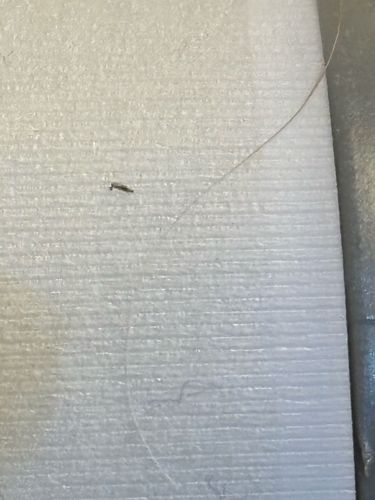Fungus Gnat (likely)
Scientific Name: Likely Sciaridae or Mycetophilidae family (various genera and species)
Order & Family: Order Diptera, Family Sciaridae (dark-winged fungus gnats) or Mycetophilidae (true fungus gnats)
Size: Typically 2-5 millimeters (0.08-0.2 inches) in length.

Natural Habitat
Damp environments, especially where fungi or decaying organic matter are present. Commonly found around potted plants, greenhouses, compost piles, and other moist areas indoors or outdoors.
Diet & Feeding
Adult fungus gnats typically do not feed or feed on nectar/dew. Larvae primarily feed on fungi, decaying organic matter, and plant roots.
Behavior Patterns
Adults are weak fliers and often seen flying in small swarms or crawling on surfaces near moisture or potted plants. Females lay eggs in moist soil or decaying organic matter. Larvae develop in these damp conditions, feeding on fungi and roots. The life cycle from egg to adult can be as short as 2-3 weeks.
Risks & Benefits
Potential risks: While generally harmless to humans, large populations can be a nuisance. Larvae can damage plant roots, especially seedlings and young plants, leading to wilting or stunted growth. They can also spread plant pathogens. Potential benefits: Larvae contribute to decomposition of organic matter in ecosystems.
Identified on: 10/16/2025